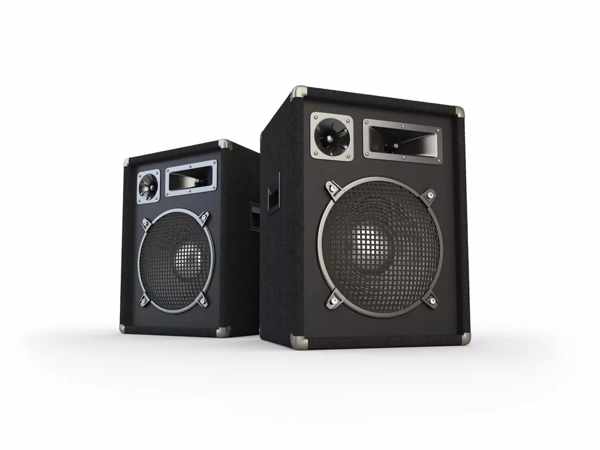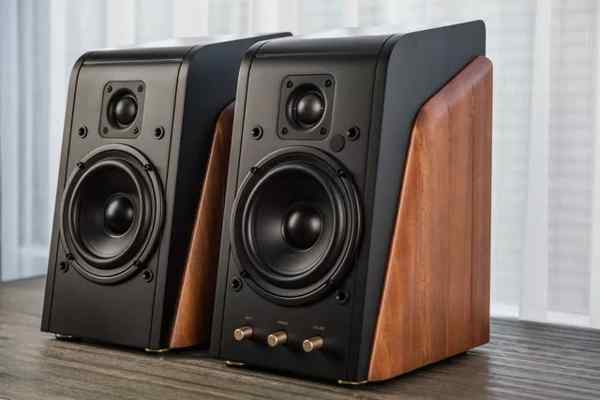We are not musicians. We often can't tell the difference between Mozart's and Haydn's musical styles. I don't need to understand the difference between Andy Lau's range and Xu Xiaofeng's range, but we can all appreciate and appreciate the joy that music brings to us. We don't need to know what kind of sound or music we have, but we can all have a suitable set of sounds to add a bit of relaxation and relaxation to our lives.
However, when purchasing audio, we tend to fall into some misunderstandings. Understanding these misunderstandings can make us avoid being deceived when purchasing audio.
Blind superstition power
This parameter of power is actually a basic parameter to measure the performance of an active speaker or amplifier. Just because the manufacturer's intention to avoid, so in the description of many products, power has become a place to play word games, often become a meaningless parameter.
Rated output power (RMS)
RMS power is arguably the only truly meaningful of all power labeling methods. It refers to the maximum power that the power amplifier circuit can continuously output within the rated distortion range. Also known as "effective power." Regardless of whether we recommend an active subwoofer, or the power rating of the amplifier is generally referred to as the rated output power.
Peak music output power (PMPO)
Refers to the instantaneous maximum output power of the power amplifier without considering the distortion at all.
The latter two kinds of power are actually meaningless, because their so-called "instant" is often a few milliseconds "instantaneous" that cannot be heard at all.
However, many manufacturers often seize the consumer's "power is better, the better" mentality, the power amplifier with a rated power of several tens of W, the subwoofer with a power of 100 watts, and the PMPO to identify hundreds of watts or even kilowatts. !
The bigger the speaker, the better.
The woofer has a large caliber, and the bass is obviously more powerful in the sense of hearing. The sense of volume is more, the dive is deeper, and the bass is more impactful. However, if it is a small-sized speaker, and the sound adjustment is not in place, the driving power is insufficient, and the bass is easily blurred, such as dense drum sound.
Although the small-caliber horn bass will be clean and neat, the transient response is very good, but the bass is cut off quickly. It is not suitable for large dynamic works and expressive grand scenes. In short, the bass is not "stunning"!
At the same time, the large unit also puts forward higher requirements for the matching of the power amplifier. Without good control, the sound strength can't come out, the speed can't be stopped, and it is not as comfortable as the small unit.
In addition, if your listening room is relatively small, the advantages of a large unit are not reflected. Instead of spending more on the "size", it is better to choose the overall upgrade, and also the size of the speaker that also matches the listening environment.
Buy beautiful looks
The appearance of a good equipment is not necessarily gorgeous, but it is usually very concise. The function that is not useful for improving the sound quality can save the province, but the production process will be good. "Good-looking" is never equal to "sounding". For the appearance, I think HI-FI equipment generally has two obvious characteristics: 1, the appearance is often very concise, the shape is generally not exaggerated. 2, will not be car paint, high-grade mahogany and other accessories to form a very trendy, advanced effect (more than 200,000 yuan of equipment is another matter).
The more high-end equipment materials tend to be more simple, you may wish to pay attention to some European and American, especially German speakers, often do not take some special sensational appearance, but the sound is often the best. And the power of the traditional big factory is not only the appearance, but also a lot of work in the key structure that affects the sound, such as the box structure, internal reinforcement and material technology, and these are not easily seen from the appearance.
Heavy brand light match
For audio equipment, the price often cannot fully reflect the basic quality. The equipment of 10,000 yuan will certainly be much better than the equipment of 1,000 yuan, but the equipment that sells 5,000 yuan is not necessarily better than the equipment that sells 4,500 yuan. such. Because each manufacturer's design level, components used, parts purchase channels, and cost control levels are different, the products with similar levels often have large market prices. So don't think that price is important, but don't be blind.
Sound is the product of science and technology, but it is also an artificial work. Different works in different regions have different design directions, and the cost is different. There is too much ink on the re-industrial design, and the cost must be reduced in terms of sound quality.
At the same time, the production of different regions, influenced by historical culture and industrial base, more or less easy to carry unique personality and direction, the product's sound characteristics are naturally biased. In choosing a matching product, choosing the right product combination is the key to getting the right sound.
If you don't have enough experience, or don't have a special grasp, you can choose some brands such as Germany and Switzerland that have historical accumulation and precipitation. These sounds are more balanced and accurate, and there is no brand with special bias. Under the premise of using listening experience, after having a certain ability to control the accurate sound, it is more reasonable to slowly study the style matching and gameplay.
However, when purchasing audio, we tend to fall into some misunderstandings. Understanding these misunderstandings can make us avoid being deceived when purchasing audio.

Blind superstition power
This parameter of power is actually a basic parameter to measure the performance of an active speaker or amplifier. Just because the manufacturer's intention to avoid, so in the description of many products, power has become a place to play word games, often become a meaningless parameter.
Rated output power (RMS)
RMS power is arguably the only truly meaningful of all power labeling methods. It refers to the maximum power that the power amplifier circuit can continuously output within the rated distortion range. Also known as "effective power." Regardless of whether we recommend an active subwoofer, or the power rating of the amplifier is generally referred to as the rated output power.
Peak music output power (PMPO)
Refers to the instantaneous maximum output power of the power amplifier without considering the distortion at all.
The latter two kinds of power are actually meaningless, because their so-called "instant" is often a few milliseconds "instantaneous" that cannot be heard at all.
However, many manufacturers often seize the consumer's "power is better, the better" mentality, the power amplifier with a rated power of several tens of W, the subwoofer with a power of 100 watts, and the PMPO to identify hundreds of watts or even kilowatts. !

The bigger the speaker, the better.
The woofer has a large caliber, and the bass is obviously more powerful in the sense of hearing. The sense of volume is more, the dive is deeper, and the bass is more impactful. However, if it is a small-sized speaker, and the sound adjustment is not in place, the driving power is insufficient, and the bass is easily blurred, such as dense drum sound.
Although the small-caliber horn bass will be clean and neat, the transient response is very good, but the bass is cut off quickly. It is not suitable for large dynamic works and expressive grand scenes. In short, the bass is not "stunning"!
At the same time, the large unit also puts forward higher requirements for the matching of the power amplifier. Without good control, the sound strength can't come out, the speed can't be stopped, and it is not as comfortable as the small unit.
In addition, if your listening room is relatively small, the advantages of a large unit are not reflected. Instead of spending more on the "size", it is better to choose the overall upgrade, and also the size of the speaker that also matches the listening environment.

Buy beautiful looks
The appearance of a good equipment is not necessarily gorgeous, but it is usually very concise. The function that is not useful for improving the sound quality can save the province, but the production process will be good. "Good-looking" is never equal to "sounding". For the appearance, I think HI-FI equipment generally has two obvious characteristics: 1, the appearance is often very concise, the shape is generally not exaggerated. 2, will not be car paint, high-grade mahogany and other accessories to form a very trendy, advanced effect (more than 200,000 yuan of equipment is another matter).
The more high-end equipment materials tend to be more simple, you may wish to pay attention to some European and American, especially German speakers, often do not take some special sensational appearance, but the sound is often the best. And the power of the traditional big factory is not only the appearance, but also a lot of work in the key structure that affects the sound, such as the box structure, internal reinforcement and material technology, and these are not easily seen from the appearance.

Heavy brand light match
For audio equipment, the price often cannot fully reflect the basic quality. The equipment of 10,000 yuan will certainly be much better than the equipment of 1,000 yuan, but the equipment that sells 5,000 yuan is not necessarily better than the equipment that sells 4,500 yuan. such. Because each manufacturer's design level, components used, parts purchase channels, and cost control levels are different, the products with similar levels often have large market prices. So don't think that price is important, but don't be blind.
Sound is the product of science and technology, but it is also an artificial work. Different works in different regions have different design directions, and the cost is different. There is too much ink on the re-industrial design, and the cost must be reduced in terms of sound quality.
At the same time, the production of different regions, influenced by historical culture and industrial base, more or less easy to carry unique personality and direction, the product's sound characteristics are naturally biased. In choosing a matching product, choosing the right product combination is the key to getting the right sound.
If you don't have enough experience, or don't have a special grasp, you can choose some brands such as Germany and Switzerland that have historical accumulation and precipitation. These sounds are more balanced and accurate, and there is no brand with special bias. Under the premise of using listening experience, after having a certain ability to control the accurate sound, it is more reasonable to slowly study the style matching and gameplay.
SHENZHEN CHONDEKUAI TECHNOLOGY CO.LTD , https://www.szsiheyi.com